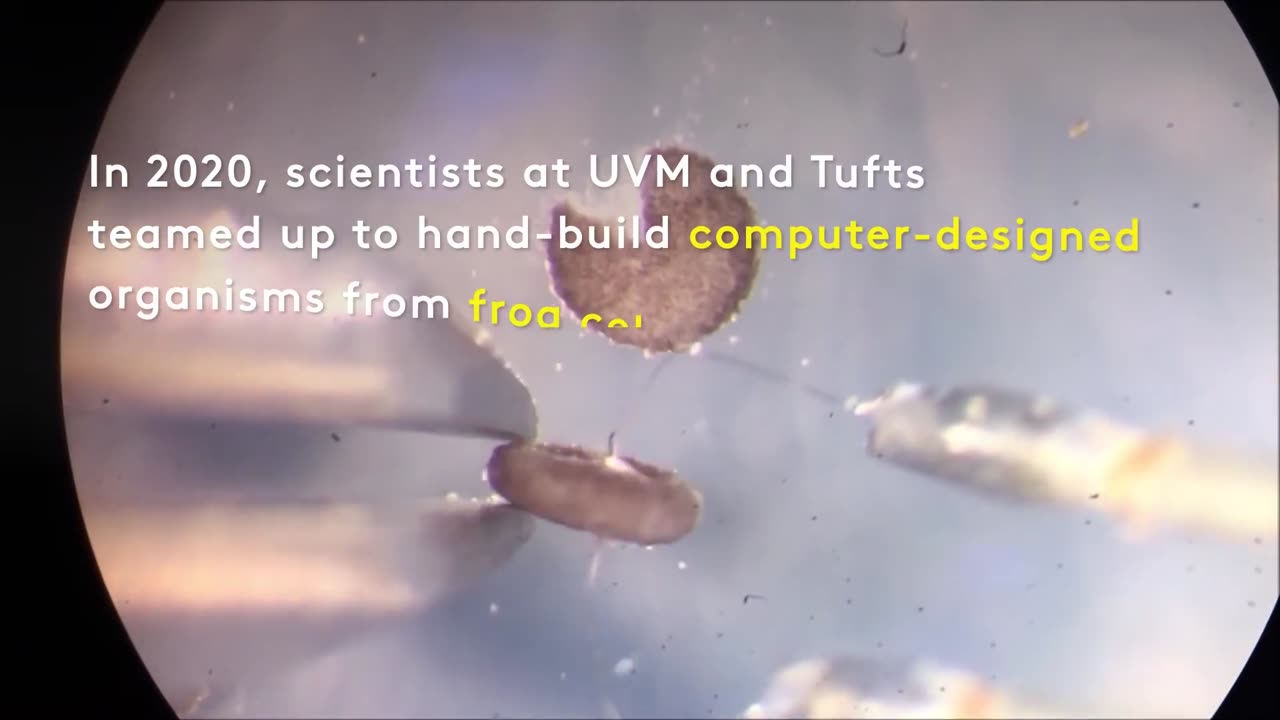Premium Only Content

World’s First Living Robots Can Reproduce
Formed from the stem cells of the African clawed frog (Xenopus laevis) from which it takes its name, xenobots are less than a millimeter (0.04 inches) wide. The tiny blobs were first unveiled in 2020 after experiments showed that they could move, work together in groups and self-heal.
Now the scientists that developed them at the University of Vermont, Tufts University and Harvard University’s Wyss Institute for Biologically Inspired Engineering said they have discovered an entirely new form of biological reproduction different from any animal or plant known to science.
The original study was published here:
Kinematic self-replication in reconfigurable organisms
Almost all organisms replicate by growing and then shedding offspring. Some molecules also replicate, but by moving rather than growing: They find and combine building blocks into self-copies. Here we show that clusters of cells, if freed from a developing organism, can similarly find and combine loose cells into clusters that look and move like they do, and that this ability does not have to be specifically evolved or introduced by genetic manipulation. Finally, we show that artificial intelligence can design clusters that replicate better, and perform useful work as they do so. This suggests that future technologies may, with little outside guidance, become more useful as they spread…
Scientists suggests that Artificial Intelligence remains in control of the robots and is able to postpone loss of replication. In days it can develop new qualities of artificial life.
We find that synthetic multicellular assemblies can also replicate kinematically by moving and compressing dissociated cells in their environment into functional self-copies. This form of perpetuation, previously unseen in any organism, arises spontaneously over days rather than evolving over millennia. We also show how artificial intelligence methods can design assemblies that postpone loss of replicative ability and perform useful work as a side effect of replication. This suggests other unique and useful phenotypes can be rapidly reached from wild-type organisms without selection or genetic engineering, thereby broadening our understanding of the conditions under which replication arises, phenotypic plasticity, and how useful replicative machines may be realized.
-
 1:06:52
1:06:52
DeVory Darkins
2 hours agoBREAKING: Congress issue MAJOR EPSTEIN Update as MTG goes OFF THE RAILS
99.5K73 -
 2:06:23
2:06:23
Side Scrollers Podcast
4 hours agoStreamer Awards WRECKED + Cloudfare OUTAGE + AI LOVED ONES?! + More | Side Scrollers
20.1K1 -
 1:57:30
1:57:30
Steven Crowder
5 hours agoSteven Crowder is a Deep State Agent
493K395 -
 1:04:17
1:04:17
Sean Unpaved
3 hours agoJames Franklin Is Going To REVIVE Virginia Tech! | UNPAVED
16.2K -
 LIVE
LIVE
Viss
5 hours ago🔴LIVE - Completing Quests & Annihilating All in Our Path! - Arc Raiders!
72 watching -
 53:51
53:51
The Rubin Report
4 hours agoBill Maher Obliterates Patton Oswalt’s Liberal Bubble in Only 2 Minutes
51.5K54 -
 LIVE
LIVE
LumpyPotatoX2
4 hours agoWhere Winds Meet: Just Petting Kitties - Made in China
44 watching -
 LIVE
LIVE
ReAnimateHer
20 hours ago $0.83 earnedTwisted Tales & True Crime - Inbred Byrd Sisters & Graysone Homestead
63 watching -
 1:08:01
1:08:01
iCkEdMeL
3 hours ago $1.68 earned🚨Mom Gives Birth on Highway After Kicked Out of Hospital?!
25.1K6 -
 14:28
14:28
Clownfish TV
5 hours agoDisney is DONE with DEI?! | Clownfish TV
14.9K10